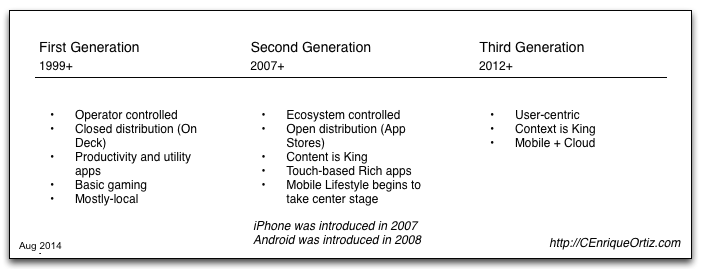We currently are at the third generation of native Mobile apps (2014), with each generation building upon the previous one.
The first generation was introduced to the “masses” circa 2000. This generation of mobile apps were Operator-centric and built for the first generation of mobile handheld devices such as PalmOS, J2ME, WinCE, BlackBerry OS, Nokia devices, Psion and other.
The second generation came with the iPhone and Android (2007–2008), essentially giving (re)birth to a new generation of mobile apps where rich content was king. These were apps based on advanced Smartphones and higher-speed networks that pretty much made the previous generation obsolete. During this time period the Ecosystem took center stage away from the Operator. Many of the companies behind the first generation such as Nokia, BlackBerry and Microsoft were impacted during this time period in major ways — some are gone while others and are still trying to recover.
More recently, we have entered the third generation of mobile apps where the user and user context is king, with sensors on the device and core services and infrastructure residing on the cloud.
The following table summarizes the three generations of mobile apps (2014).
/CEO
